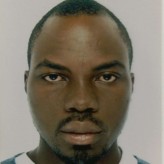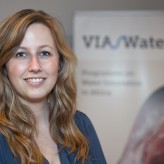Dear ISGEAG-project owners,
We hope that the implementation of your project goes well.
As NOEVA (HydroGeophysics in Coastal zone of Benin) project owner which is funded by Via-Water program, we would like to inform you that our web page has just been created on the Via water website (https://www.viawater.nl/projects/noeva-hydrogeophysics-in-coastal-zone-o...).
Our main goal is to develop a new approach based on geophysical method (TDEM, ERT and MRS) by which groundwater resources of African coastal cities can be better known and then sustainably used.
Recently, our team was working on a project named GRIBA (Groundwater Resources In Basement rocks of Africa) aiming at improving the geophysical implementation for borehole siting in hard rocks area and funded by the African and European Union. Through this project, we gained a lot of experience and knowledge that we will be happy to share with you.
We wrote an article about borehole siting in hard rocks context using direct current geophysics. In this paper we presented a figure (Fig1) showing that the electrical profiling anomalies selected as targets result from clayey areas within the saprolitic layer (Fig1-a). Borehole F1 (Fig1-c) was drilled on one of these anomalies for which interpretation of electrical sounding is at right (Fig1-b) and was negative (i.e. yielded less than the threshold of 0.7 m3/h). Based on the ERT interpretation, a less clayey area was selected to drill the second borehole F2 in the surroundings. The borehole F2 has a higher and acceptable yield of 1 m3/h and is therefore positive.
Fig. 1. EP, VES and ERT results on mica shist area. a) EP with Schlumberger and Wenner arrays; b) VES on anomaly N°1 on Schlumberger EP; c) ERT section using WA and WB arrays.
Finally we conclude that:
- Electrical profiling frequently misleads practitioners by siting boreholes in clayey zones
- Electrical soundings are often affected by 2D effects and their interpretations are carried out with a 1D hypothesis
- As compared to 1D techniques, ERT results in a better resolution of both 2D geological structures and characterization of the main hydrogeological targets which are the saprolitic and the stratiform fractured layers.
Did your research works carried out in Kenya lead you to similar conclusions?
The paper is actually in press and we will send it to you once it would have been published to start discussions together on geophysical implementation for borehole siting in hard rock area.
Please do not hesitate to let us know if you know or hear about similar projects with which it would be interesting to discuss.
Best regards,
NOEVA-team



This post is a contacting note to ISGEAG-project (Kenya) and also aims at making contacts with project owners working on the use of geophysical methods for borehole siting.
Thank you for sharing this interesting post and for reaching out. I know someone in Burkina Faso who is trying to build a geophysical apparatus (for electrical surveying) and it would be great for him if he had contact with some people who have more experience. Because he has no experience or formal education whatsoever. However, he has learnt to build rope-pumps and a well-driller and to reduce the number of negative drills, he now wants to build an electrical sounding machine based on this manual: https://www.practica.org/wp-content/uploads/2016/12/Manuel-Kit-de-Sondage-FR-SABP221216.pdf
You can find some pictures of their drill (forageur) in action on their facebook page: https://www.facebook.com/dammetjesburkina.nl
I'm not an expert in these matters, though I had some geophysics in university. However, I work at Deltares where we have real experts in this. But I still need to find out which colleagues to talk to exactly and it is hard to involve them without a formal project. I would love to be connected to the African community working on these matters. So please keep me informed.
Hello Fabrice,
We have finished our first ISGAG location, which was in Kaijado on basement geology. We experienced VES, HEP, TDEM, AMT and ERT.
Our conclusions point in the same direction for this type of geology, ERT is most helpfull if the exploration depth is sufficient and more than one electrode configuration is used. It gave us insight in burried river channels related to fractures. TDEM and AMT gave us information on the depth to the bedrock but the resolution was to poor to pinpoint fractures. Circumtances were not favourable for TDEM (increasing resistivity with depth). TDEM we be of use in our next locations more towards the coast, to explore the fresh salt groundwater interface.
We compared traditional methods like VES and HEP with ERT and we came to the same observations, anomaly's are caused by superfial layers and the exploration depth is often not enough to reach the groundwater table.
We would like to share our findings with your work, please send us your paper if it is in press. We are still working on our first report, but we can share information
Most regards,
Michel Groen
Harry Rolf
Dear Michel and Harry,
It is great to start discussing and sharing what we have learnt and experienced in the application geophysics to groundwater issues.
Thank you for your response to our post about which I have some comments and questions.
Comments
Applicability of TDEM method in basement context
We agree with your conclusion confirming the well known difficulty of TDEM method to create electromagnetic induction in high resistivity area as basement context.
Investigation depth of one electrode configuration and ERT
We think that the ease (in terms of practicability) of reaching important investigation depth with one electrode configuration is not a real advantage if our target can not be seen. Moreover, one can also investigate deeply using ERT method by increasing the electrodes spacing as with pole-pole or pole-dipole array. But of course this raises the question of resolution of the method with depth.
Anomalies are caused by superficial layers
We are really comfortable with the fact that you also observed that for both one electrode configuration and ERT, anomalies are caused by superficial layers, and we think that the advantage of ERT is that these anomalies are resolved.
Questions:
Water table depth?
We have seen you conclude that "the exploration depth is often not enough to reach the groundwater table". Which electrode configuration did you use and what was the depth to water table?
Conceptual geological model?
For us, there are two extreme cases in basement context: either there is no saprolite above the fractured bedrock and in that case the target is the fractures, or there is a saprolite layer above the fractured bedrock and for that case, the target is the thickness and the quality (i.e. clay content) of this saprolite layer. Could you please give me more information about the geological context of Kaijado?
Many thanks for this interesting sharing.
Kind regards,
Fabrice LAWSON
Dear Fabrice,
Thank you for your comments. Good to hear from you!
According to your questions, the water table in the Kaijado area is depending the topography, at the lower parts around 70 mtr or more below ground surface. We used cable of 800 mtr, electrode distances of 10 mtr, with dipole, schlumberger and gradient configurations. With this setup explorationdepth came up to 140 mtr. We also used 5 mtr interval to compare the resolution
The conceptual model was at the higher topography the saprolite as a local aquifer system. In the valles fractures and paleo river channels
Question:
How did you get on with the MSR method? Did it reach the desired exploration depth and resolution?
DId you compare it with other methods?
Thank you for sharing your experience and comments,
Many regards,
Michel
Dear Cheryl,
Many thanks for your comment and interest to this post. It is a pleasure for us to establish this connection with you and to discuss about questions related to the application of geophysics (especially the electrical method) for boreholes sitting.
After reading the Bedrock manual and looking at the pictures of the apparatus (drill and 1D electrical prospecting device - resistivimeter), our thought is that this initiative to build a resistivimeter is commendable and deserves recognition as an effort to be encouraged.
But we think that the use of resistivimeter for 1D resistivity techniques (i.e. Electrical Profiling -EP and Electrical Sounding -ES) is not appropriate to characterize the borehole target in weathered hard rock areas which is thick weathered unit (no clayey saprolite and stratiform and/or subvertical fractured zone, see Fig.2). Generally on EP, conductive anomaly (resistivity decreasing) is often considerate by practitioners as presence of unweathered subvertical fracture (see Fig.2). But in reality, EP anomalies are often due to clayey zones in saprolite (see Fig.2). Also, ES are often affected by 2D effects (clayey zones and variations of weathered unit thickness) and their interpretations are carried out with a 1D hypothesis that cannot properly reveal the 2D geometry on the targeted aquifer. Therefore, they seldom give with confidence the required information to the hydrogeologist.
Fig. 2 Hydrogeological conceptual model of weathered hard rock (adapted from Dewandel et al., 2011).
For more information on this topic we can discuss basing on our paper “Why 1D electrical resistivity techniques can results in inaccurate siting of boreholes in hard rock aquifers and why electrical resistivity tomography must be preferred: the example of Benin, West Africa” which is actually in press and will be sent to you once published. In this paper we prove that Electrical Resistivity Tomography is better than 1D technics for borehole siting in weathered hard rock aquifer and can save money if it improves by 5% borehole success rate.
It will be great if the resistivimeter that is being built could be modified for 2D resistivity measurement.
Best regards
Christian ALLE
Fabrice LAWSON